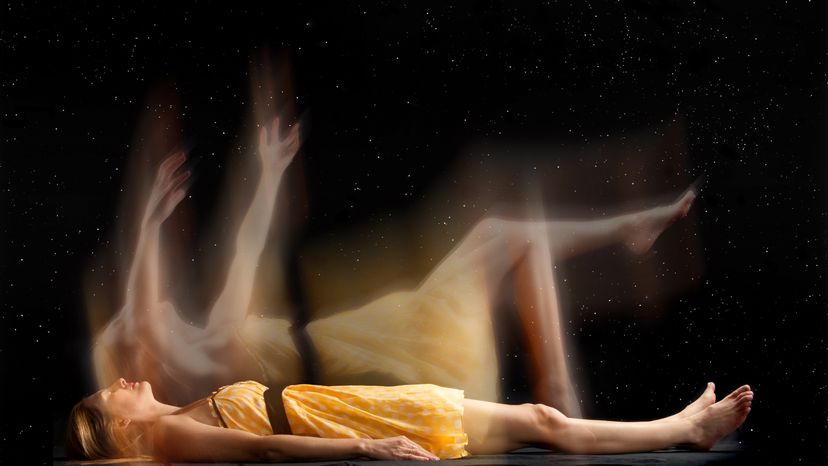
You may be familiar with the concept of an out-of-body experience (OBE) from movies — or perhaps you've experienced one yourself. For centuries, these strange phenomena have fascinated doctors, scientists, religious scholars and amateur theorists. Generally, OBEs are associated with illness or traumatic incidents, but British and Swiss researchers published studies in the academic journal "Science" in 2007 describing how it may be possible to produce OBEs in healthy people.
The experiments depended on figuring out what makes a person's brain know that they're located within their physical body. Is it primarily the sense of sight or do several senses and other processes have to work together? If a person was able to step outside themself, look around a room and see their own body as an outsider, what would happen? Would they still feel located in their physical body or would their sense of self shift to where their point of view — their "eyes" — was positioned?
Advertisement
To answer these questions, the British researchers at the University College London Institute of Neurology conducted two tests. In the first test, volunteers sat in chairs and wore video displays over their eyes. The display projected images from two cameras located about six feet behind the test subject. Each camera served as an eye, with one projecting on the left side of the display and the other on the right. The effect resulted in the participant seeing one image from a point of view six feet behind their own back.
A researcher then stood in front of the cameras so that they appeared to be next to the participant's "virtual body." From that position, the researcher touched the chests of the subject's real and virtual bodies at the same time with two plastic rods. The result was that the participants felt like they were in their virtual bodies, even though they felt the touch of the rod. Many described the experience as funny or strange.
The second test used sweat sensors to gauge participants' emotional reactions. In view of the cameras, a researcher swung down a hammer at the participant's virtual body. The sensors showed that the participants were afraid they were actually going to be hit with the hammer.
Researchers from Switzerland conducted the third test at the Laboratory of Cognitive Neuroscience at the Ecole Polytechnique Federale. Volunteers were shown one of three 3-D projections: a blackboard, a dummy or the volunteer's own body. Someone then touched the volunteer's back while another person touched the back of the projection with a brush — simultaneously in some cases. The researchers then blindfolded the volunteers, moved them backward and removed the blindfold. When asked to return to where they stood before, people who had had their backs touched simultaneously with the image of their body moved to where the projection had been — not where they originally stood. Those who had observed the dummy or blackboard being touched returned to the proper position.
Advertisement

